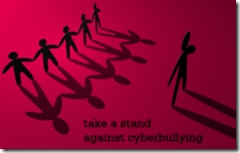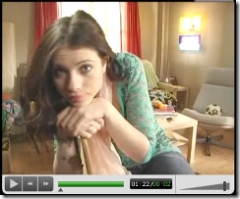Home » participatory culture (Page 30)
Category Archives: participatory culture
Apparently I’m in Vogue
 You’ll forgive the title to this post, I’ve never been able to let a good pun go and I doubt I’ll ever be able to use that one again. It’s true, though: I was interviewed about a month ago by Cathrin Shaer, a New Zealand-based writer for Vogue Australia who was writing a piece on life online. She was trying to do an awful lot in one article (talking about MySpace, Flickr, YouTube, Second Life, etc.) but somehow my name came up and I ended up talking with her for almost an hour about the complexities of interaction in different online modes. Clearly the bit that stuck was about Second Life. Here is the snippet from that interview which appeared today in ‘A life less ordinary’ (Vogue Australia, May 2007):
You’ll forgive the title to this post, I’ve never been able to let a good pun go and I doubt I’ll ever be able to use that one again. It’s true, though: I was interviewed about a month ago by Cathrin Shaer, a New Zealand-based writer for Vogue Australia who was writing a piece on life online. She was trying to do an awful lot in one article (talking about MySpace, Flickr, YouTube, Second Life, etc.) but somehow my name came up and I ended up talking with her for almost an hour about the complexities of interaction in different online modes. Clearly the bit that stuck was about Second Life. Here is the snippet from that interview which appeared today in ‘A life less ordinary’ (Vogue Australia, May 2007):
Tama Leaver, a lecturer at The University of Western Australia whose research interests include exploring how humans interact with technology, has used Second Life for business meetings: “Most of the people working in my field are spread across the globe. I’ve participated in teleconferencing, but it’s better of have a conference in Second Life because you’re all in a room together, rather than just disembodied voices.” Apparently, even if you’re meeting with a bunch of serious academics, it doesn’t matter if you look like a cartoon character. “There’s a great parallel in animated films,” Leaver explains. “We understand what’s going on in an animated character’s face — most people understanding what Shrek was saying.”
Not exactly mind-blowing stuff on my part. Also, I suspect there are a few sentences Shaer could have left in since there was somewhat more space and substance between talking about academic discussion in Second Life and Shrek (for the record, I’ve never met anyone online or offline who looks like Shrek – while the facial features might be there, no one I’ve met was actually green). That said, it’s interesting to see interest in social software spreading as far as Vogue. (Although I was a little surprised that they didn’t use any Second Life screenshots for illustration – and what they did use seemed like a bad high school art collage – perhaps the Vogue graphics people didn’t actually make it in-world).
Law and Order’s LonelyGirl15 Episode
I’m not a huge Law and Order watcher, and I’ve no idea how far the Australian schedule differs from the US one, but I was fascinated to hear (somewhat after the fact) that in November last year the Criminal Intent version of the tv franchise featured an episode which built directly on hype around LonelyGirl15.
The episode — and the fictional videoblog series — was called ‘Weeping Willow’ (instead of lonelygirl15) and instead of YouTube it was said to feature on ‘YouLenz’. I’d love to see the episode and will hunt it down one day, but what I found really impressive was the fact that the videoblog episodes created for Law and Order (still) appear online; check them out at FreeWillow17.com. These videoblog clips mimic the style and substance of lg15 really well; from the (early) dynamic between Bree and Jonas to the use of a handpuppet and the bedroom set. It was a little odd to see Buffy’s little sister (MichelleTrachtenberg) playing a character called Willow, but these are really well produced clips nevertheless.
If anyone knows when this episode will screen in Australia, please let me know!
‘Ghosts of blogging’?
In light of the recent tragic chatroom/webcam suicide, I wondered what an article “Ghosts of blogging haunt net cemetery” might have to say about the role of blogs after a blogger’s life. Alas, this has to be one of the worst, ignorant, mainstream-media puff pieces in a long time:
In the latest entry on her personal weblog, Lindsay Lohan, the hard-partying Hollywood actress, was in characteristically bubbly form. “Hey guys, I’m soooo sooo sorry I haven’t written in a while!!” she wrote. She was heading off to New York for two days of photo-shoots, then to Toronto in Canada for a week of filming, then back to Los Angeles again. The entry ended: “I just wanted to check in, I’ll try and write more … xx LL.” It has been a long wait for any Lohan fans who may be hoping for an update. That entry was posted on October 15, 2003.
Lohan’s blog has since taken its place in the internet’s fastest-growing graveyard – of an estimated 200 million blogs that have been started, then abandoned.
The extraordinary failure rate of online diaries and claims that interest in blogging will soon begin a precipitous slide are sparking an intriguing debate about the future of self-expression on the internet and whether blogs, once seen as revolutionary, are destined to become a footnote in the history of computing.
To the embarrassment of millions of internet users – from Hollywood celebrities such as Lohan, Melanie Griffith and Barbra Streisand to countless ordinary parents, workers and would-be poets – the evidence of failed diary-keeping cannot be easily erased from search engines that continue to provide links to blogs that have lain dormant for years.
This article clearly commits many of the most juvenile mistakes about writing regarding blogs — no, not all blogs are online diaries; no, celebrities who blog are no more typical of bloggers than they are of people — but even a journalist who has never read a blog should feel a little silly making the leap to describing the ‘extraordinary failure rate’ of blogs. Or are blogs, unlike regular diaries, or pretty much any other form of narrative or writing – the only form which is supposed to be endless? Blogs have been around for a long time and, like most other things, many blogs have had their natural lifespan, dictated by the purpose for which they were originally constructed. Some blogs are used in education – and thus often have a lifespan of a semester or two; some are issue-driven and may end when that issue is resolved; indeed some are diaries, but like hardcopy diaries, they tend to get left behind after a few years.
All of those gripes aside, the article did make two good points: firstly, that the exponential rise of blogging has to slow soon (because exponential means, quite literally, that there would have to be more blogs than people within a few years at recent growth rates); and secondly that citizens of a digital culture may be shifting their focus to other platforms like YouTube and MySpace. That’s not really an argument about the death of blogging, though – it’s more testimony to the maturing of the world of social software in that many more options available for those many networks of interest and friendship which life online can facilitate.
Of course, I wonder why no one writes about how many MySpace profiles are abandoned? (Far be it from me to points out that the same folk that own MySpace own The Australian).
I guess one has to ask The Australian, if blogs are on the decline, why does your blog section keep growing?


